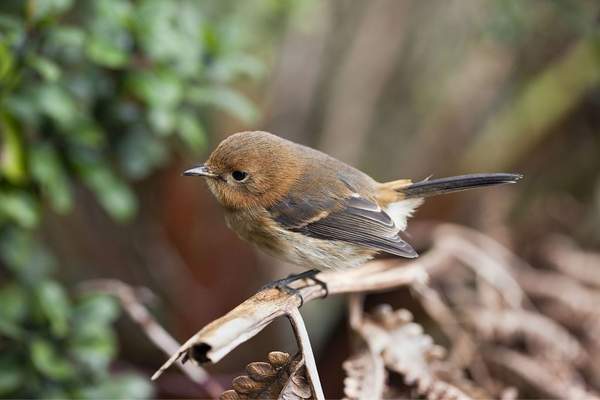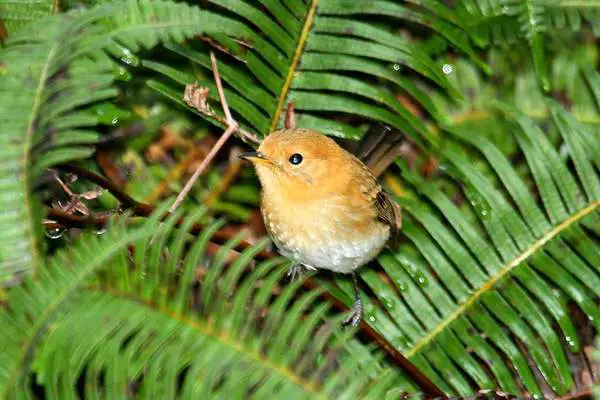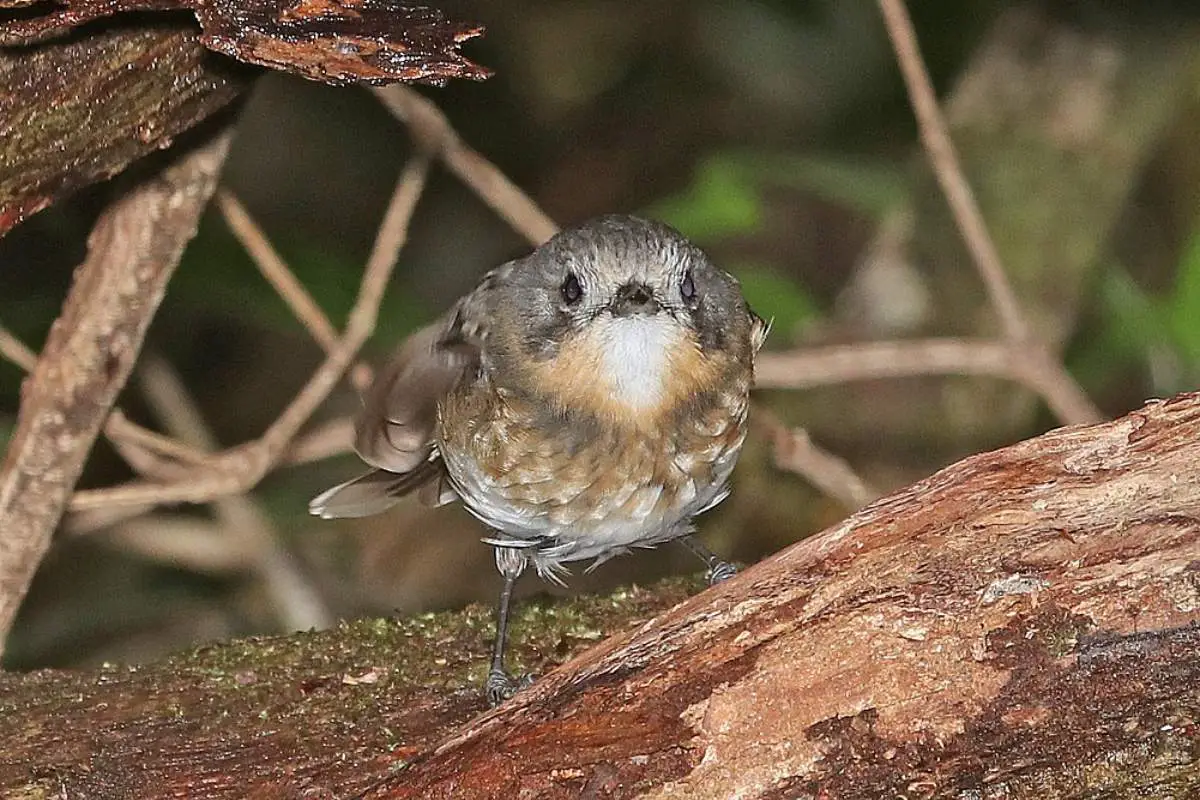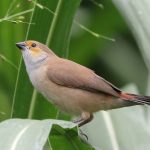Common Name: Kauai Elepaio
Scientific Name: Chasiempis sclateri| Size | Diet | Range in Hawaii | Status in Hawaii |
|---|---|---|---|
| 6 in. | arthropods like beetles, ants, caterpillars, and spiders | Kaua'i | Vulnerable |
The Kauai Elepaio (Chasiempis sclateri) is a small songbird that is native to the island of Kauai in Hawaii. It is a member of the Monarchidae family, which includes the Monarch flycatchers. This bird is also known for its loud, clear call, which is often heard in the forest.
Kauai elepaio
Appearance

John Game via Wikimedia Commons | CC BY 2.0
The Kauai elepaio has a distinctive plumage that is a mix of black and white. The head, upperparts and upperwing are black and the throat, breast and belly are white. The tail is dark and has a white tip.
The bill is dark and the eyes are dark brown. They have a wingspan of around 7 inches and have an overall length of about 6 inches. They weigh about 11 grams.
The male and female look alike. Juvenile birds are similar to adults but have browner plumage. They are small birds with a rounded head, short bill and a long tail.
Diet
The Kauaʻi ʻelepaio is known to have a diverse diet, which primarily consists of insects. They primarily feed on arthropods like beetles, ants, caterpillars, and spiders, which they capture by foraging on the forest floor, in bushes and in the canopy. They also consume fruits, especially of the native plants such as ōhi‘a, ma‘o, and kōlea.
Behavior
The Kauaʻi ʻelepaio is an active and agile bird that is known for its acrobatic behavior. They are typically found in forests, where they forage for food. They are known to be territorial, and they defend their territory aggressively.
Kauaʻi ʻelepaios are known to be vocal birds, and they have a wide range of calls, including a loud, high-pitched whistle, which is often used in territorial and courtship displays.
Nesting
The Kauaʻi ʻelepaio is known to be a cavity nester, which means that it typically nests in holes or cavities in trees. They prefer to nest in live or dead ohia trees, but also use other native tree species such as koa and kukui. Both the male and female work together to excavate a cavity and build the nest, which is typically made of twigs, moss and leaves.
They usually lay one or two eggs in the nest, and both parents take turns to incubate the eggs, which usually takes 14 to 16 days. After hatching, both parents also take turns to feed and care for the chicks, until they fledge, which typically takes around four weeks.
Habitat

The Kauaʻi ʻelepaios are typically found in native mesic and wet forests, at elevations ranging from sea level to around 2,000 feet. They are known to prefer mature forests with a diverse structure and high canopy, but also occur in younger regenerating forests and found both in lowland and montane forests and have an affinity for ohia and koa trees.
They are also known to inhabit disturbed areas such as pastures, plantation forests and even suburban gardens, as long as suitable nesting sites and food sources are available.
Range
The Kaua’i ʻelepaio is found exclusively on the island of Kaua’i in Hawaii. The bird’s range on Kauai is restricted to small fragments of remaining native forests, including Alakai Wilderness Preserve, Waimea Canyon State Park and Kokee State Park.
Conservation Status
The Kaua’i ʻelepaio is listed as Vulnerable on the IUCN Red List. The classification of the species as vulnerable means that the species is facing a high risk of extinction in the wild.
Interesting Facts
1. They are opportunistic feeders
Kaua’i ʻelepaios are known to be opportunistic feeders and also feed on nectar, pollen and small invertebrates. They occasionally also feed on small lizards and snails.
2. They are monogamous
The Kaua’i ʻelepaio is known to be monogamous, and they form long-term pair bonds. Both parents are involved in the care of the chicks.
3. They use tools while foraging
The Kaua’i ʻelepaio is also known to make use of tools while foraging, they are observed to use twigs to probe into crevices to catch insects.
4. They are non-migratory bird
The Kaua’i ʻelepaio is a year-round resident bird, it does not migrate.
5. An important seed disperser
The Kaua’i ʻelepaio is known to be an important seed disperser for some native trees and shrubs, helping to maintain the biodiversity of native Hawaiian forests.
Frequently Asked Questions:
How long do Kauai elepaio live?
The Kaua’i ʻelepaio is a long-lived bird species, with a lifespan of around 15 years.
What is the economic or cultural importance of the Kauai elepaio?
The Kaua’i ʻelepaio is an important indicator species of the health of native Hawaiian forests. The decline of the population can be an indication of degradation or destruction of the forest habitat.
What is the population size of the Kauai elepaio?
The population of the Kaua’i ʻelepaio is considered critically endangered, with an estimated population size of less than 1000 individuals.




